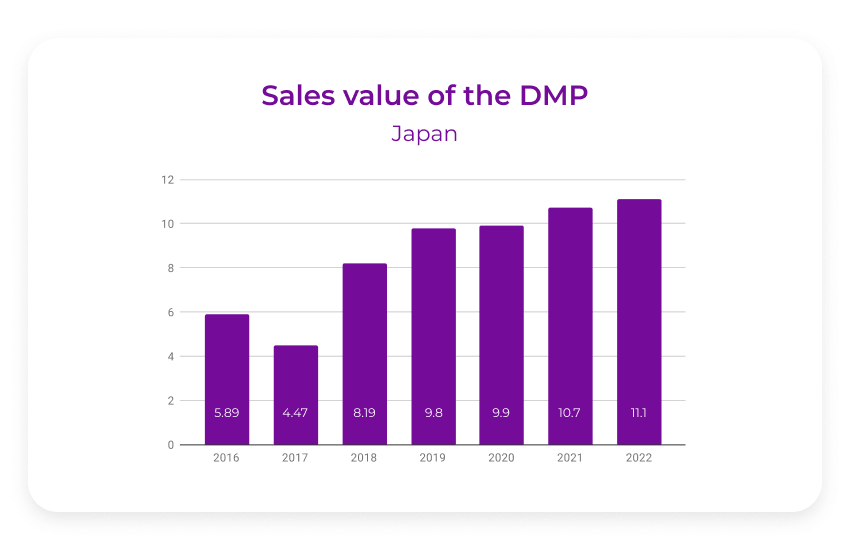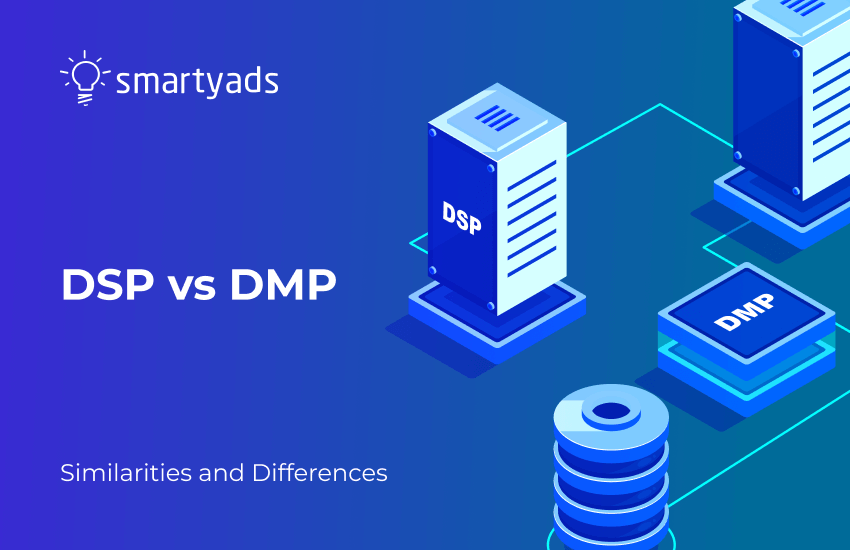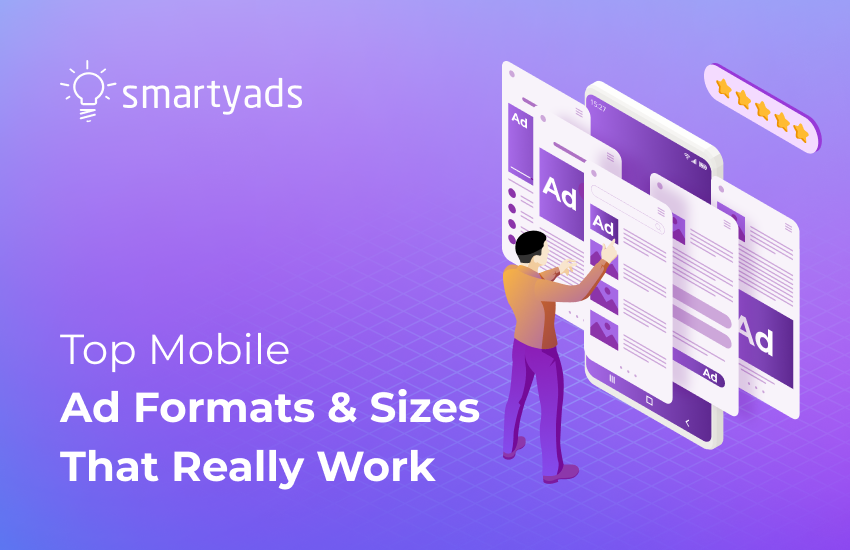If you’re at the forefront of your ad-buying journey, it’s crucial to distinguish different types of software solutions beforehand, which are within the scope of the overall programmatic media buying solutions. Demand-side platforms and data management platforms are among the giant tech units in the programmatic ecosystem that aim to enhance data-driven strategy and help you to manage your consumers’ data effectively.
To put it simply, a DSP (demand-side platform) is a piece of software with a real-time bidding (RTB) algorithm (find out more about Real-time Bidding Solutions), commonly used by media advertisers and digital agencies. It provides centralized buying of ad inventory in order to show the ads to the users for the optimal value, whereas the data management platform (DMP) is a users’ data warehouse – a software that sorts and manages any type of consumers’ data, gathered from multiple channels and platforms. Thanks to an automated function of audience segmentation, digital advertisers can create highly targeted ads that resonate with all consumers’ needs. Let’s connect the dots: get a deeper dive into the difference between DSP and DMP.

DSP and DMP at a glance: stats and trends
According to Statista research, the overall market size of the DMP (data management platform) services in Japan was forecasted to reach almost 11 billion Japanese yen by 2022.

Media buyers, ad publishers, and marketers often use data management platforms to get more comprehensive control over their data and then turn these data insights into something actionable and of high value. Besides, Econsultancy study shows that 68% of digital marketers consider DMP to be the key factor that reshapes the programmatic future. For that matter, DMPs (data management platforms) are aimed to link all customer information and store it in a single centralized location. However, a DMP itself cannot perform much without being linked to another tech solution. Once your audience is segmented, you can serve your ads to consumers with the help of a demand-side platform (DSP).
The basic function of a demand-side platform is to buy impressions and ease the interactions between advertisers and publishers. Once a platform is enriched with insights from the data management platform, DSP decides automatically which impression is better to bid on, targeting the right people. Besides, a robust DSP consists of an independent entity – a mobile DSP, used by mobile media users.
Let’s compare: DMP vs DSP in details
It may sound as if there’s a subtle difference between DSP and DMP, but actually, the contrast is huge, particularly in:
| Demand-Side platform (DSP) | Data-Management platform (DSP) | |
| The way data is gathered | Demand-side platforms can collect data only from marketing campaigns. | Data management platforms might accumulate diverse sorts of data. |
| The way data is controlled | DSP is a software merely for inventory buyers. | DMP allows accessing all types of 1st, 2nd, and 3rd party data at the time, or export this data via specific functionality. DMP can also collect data from your CRM. |
| The way targeting is performed | The demand-side platform without DMP connection can use very limited targeting parameters. DSP requires additional data sets to perform extended audience targeting. | By using a DMP, you gain access to all types of user data that opens the gateway to behavioral targeting (it can be based on parameters such as income, habits, lifestyle, preferences, etc.) DMP can be used by DSPs, SSPs, or Ad Exchanges, and other participants of the programmatic ecosystem. |
| How data is stored | Data stored on the DSP platform might be reused in other digital marketing campaigns, aiming to increase their efficiency. | DMP guarantees a higher level of consumers’ data protection, optimizing a further performance of the particular audience segment. |
A Hybrid DMP and DSP – what does it mean?
Compared to standalone DSP and DMP platforms, some vendors might offer a DSP and DMP hybrid that means a DSP with some basic data management functionality or DMP with media-buying capabilities. Simply put, it’s like having the whole set of both software functionalities on a single platform, rather than using each of them separately. However, such integration might lack some vital features, such as ad campaign optimization. Likewise, the security of user data on a hybrid platform can be compromised because a vendor might use third-party technologies for data storage and processing.

What are the most common DMP and DSP use cases?
When to use a DSP:
- For successful campaign budgeting
DSPs reduce the wasteful ad spend by bidding on an impression only when it matches the optimal defined price for it.
- For advanced analytics
A smart demand-side platform provides you with the analytics considering the performance of your campaign in real-time which leads to more effective future campaign optimization. It helps you to define what works better or what should be excluded.
- For raising your brand awareness
DSP platform is based on a real-time bidding algorithm that allows your consumers to see targeted ads that are relevant to their intents.
What about DMP?
- For data collection
You can gather different sorts of data all in one place and get a 360-degree view of your potential consumers.
- For delivering more personalized experiences
By gathering all customers’ insights, advertisers can significantly optimize ad campaigns and deliver customizable messages. The data management platform lets you store, process, and manage your data effectively.
- For defining audience segments
Using clearly defined user segments advertisers can diversify ad campaign delivery according to every customer: for instance, pick a different creative for every segment, or select a different time of delivery (dayparting).
With audience profiling, publishers can also optimize content strategy according to users’ preferences. That, in turn, increases engagement and draws more narrow traffic to the website. It helps publishers attract advertisers that are focused on good quality, narrow-niche traffic.
The future success of your data-driven programmatic advertising lies in a wise DSP and DMP integration – this is the right combination that will lead to better management of digital marketing campaigns. Create hyper-personalized messages and targeted ad campaigns that are based on the true customer data with SmartyAds data management platform connected to the omnichannel demand-side platform.
Contact our experts to level up your programmatic advertising with an advanced programmatic marketing platform!


.webp)


